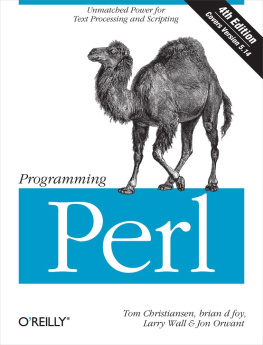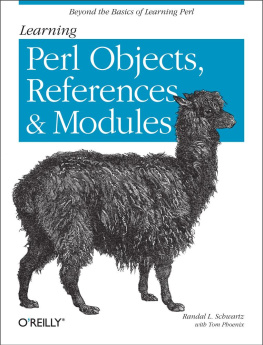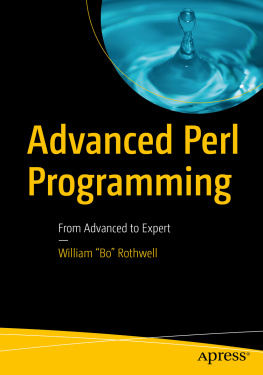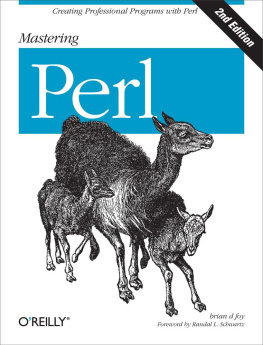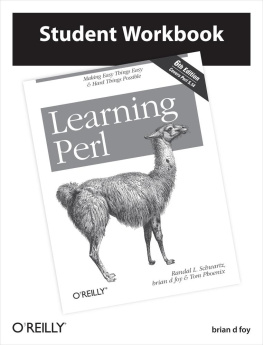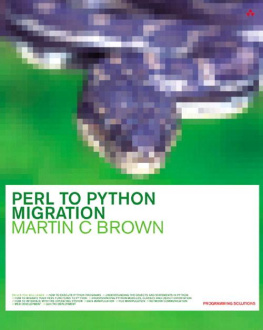Schwartz Randal Phoenix Tom foy brian - Intermediate Perl
Here you can read online Schwartz Randal Phoenix Tom foy brian - Intermediate Perl full text of the book (entire story) in english for free. Download pdf and epub, get meaning, cover and reviews about this ebook. City: Sebastopol, year: 2009, publisher: OReilly Media, Inc, genre: Computer. Description of the work, (preface) as well as reviews are available. Best literature library LitArk.com created for fans of good reading and offers a wide selection of genres:
Romance novel
Science fiction
Adventure
Detective
Science
History
Home and family
Prose
Art
Politics
Computer
Non-fiction
Religion
Business
Children
Humor
Choose a favorite category and find really read worthwhile books. Enjoy immersion in the world of imagination, feel the emotions of the characters or learn something new for yourself, make an fascinating discovery.

- Book:Intermediate Perl
- Author:
- Publisher:OReilly Media, Inc
- Genre:
- Year:2009
- City:Sebastopol
- Rating:5 / 5
- Favourites:Add to favourites
- Your mark:
Intermediate Perl: summary, description and annotation
We offer to read an annotation, description, summary or preface (depends on what the author of the book "Intermediate Perl" wrote himself). If you haven't found the necessary information about the book — write in the comments, we will try to find it.
Abstract: Perl programmers need a clear roadmap for improving their skills. Intermediate Perl teaches a working knowledge of Perls objects, references, and modules -- all of which makes the language so versatile and effective. Written by the authors of the bestselling Llama book, Learning Perl, this guide offers a gentle but thorough introduction to intermediate programming in Perl. Topics include packages and namespaces, references and scoping, manipulating complex data structures, writing and using modules, package implementation, and using CPAN
Schwartz Randal Phoenix Tom foy brian: author's other books
Who wrote Intermediate Perl? Find out the surname, the name of the author of the book and a list of all author's works by series.

